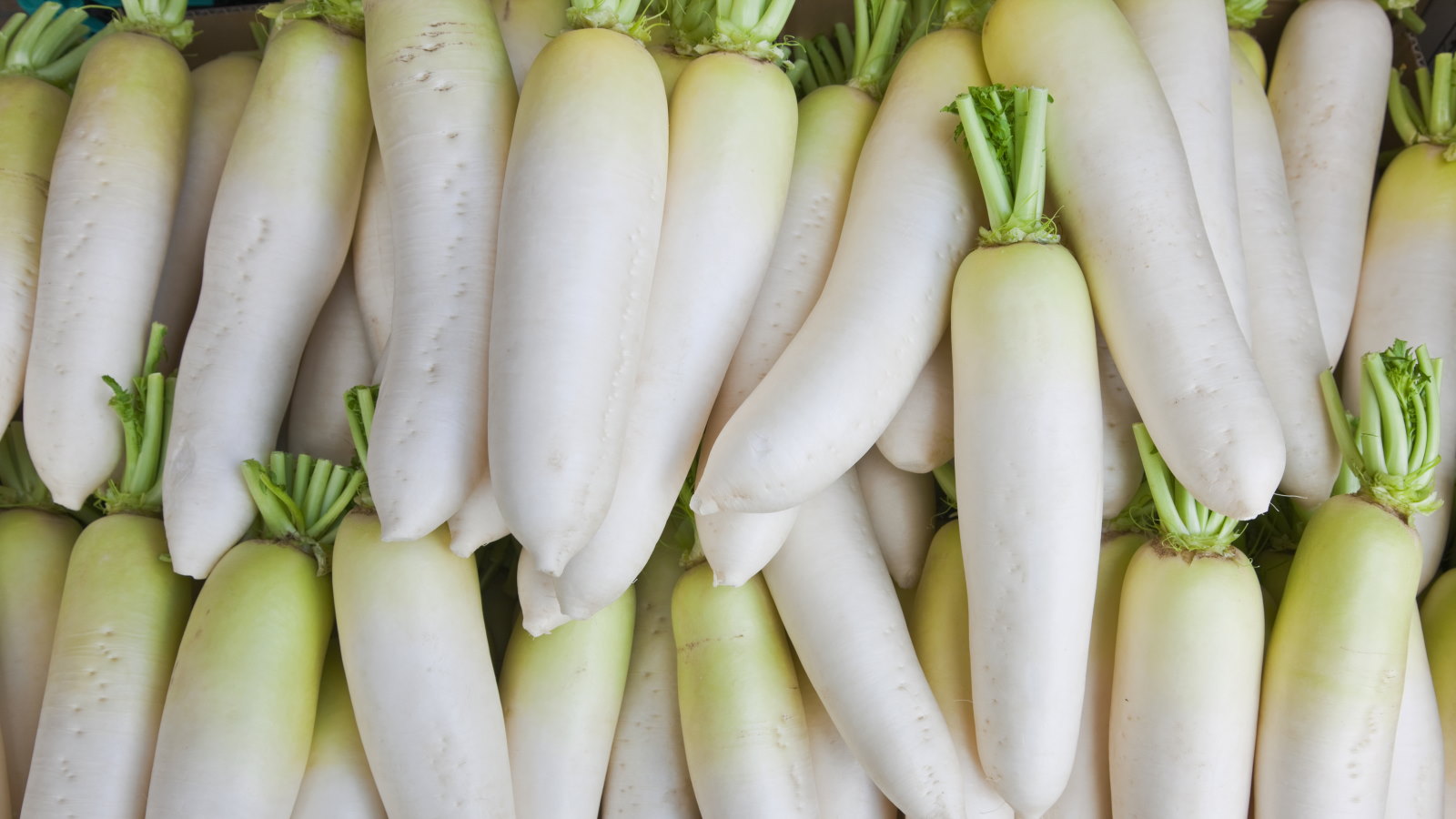
Daikon radishes are winter radishes typically grown for long white roots which have a milder flavor than the more traditional and popular summer radishes. The roots are usually around 2-4 inches wide, 12 inches in length, and can weigh up to six pounds in weight.
The crop is native to East Asia, and used commonly in Asian cuisines. Daikon radishes are increasingly popular among growers around the world nowadays and I have grown and harvested them in vegetable gardens in the UK.
If you want to learn how to grow daikon radish, sowing the cool-weather crop at the right time of year and keeping the crop consistently moist during the growing season are two important factors to get right. Add to that knowing when and how to harvest daikon radishes so you pick the roots at the perfect time to add to stir-fries, soups, stews, or salads.
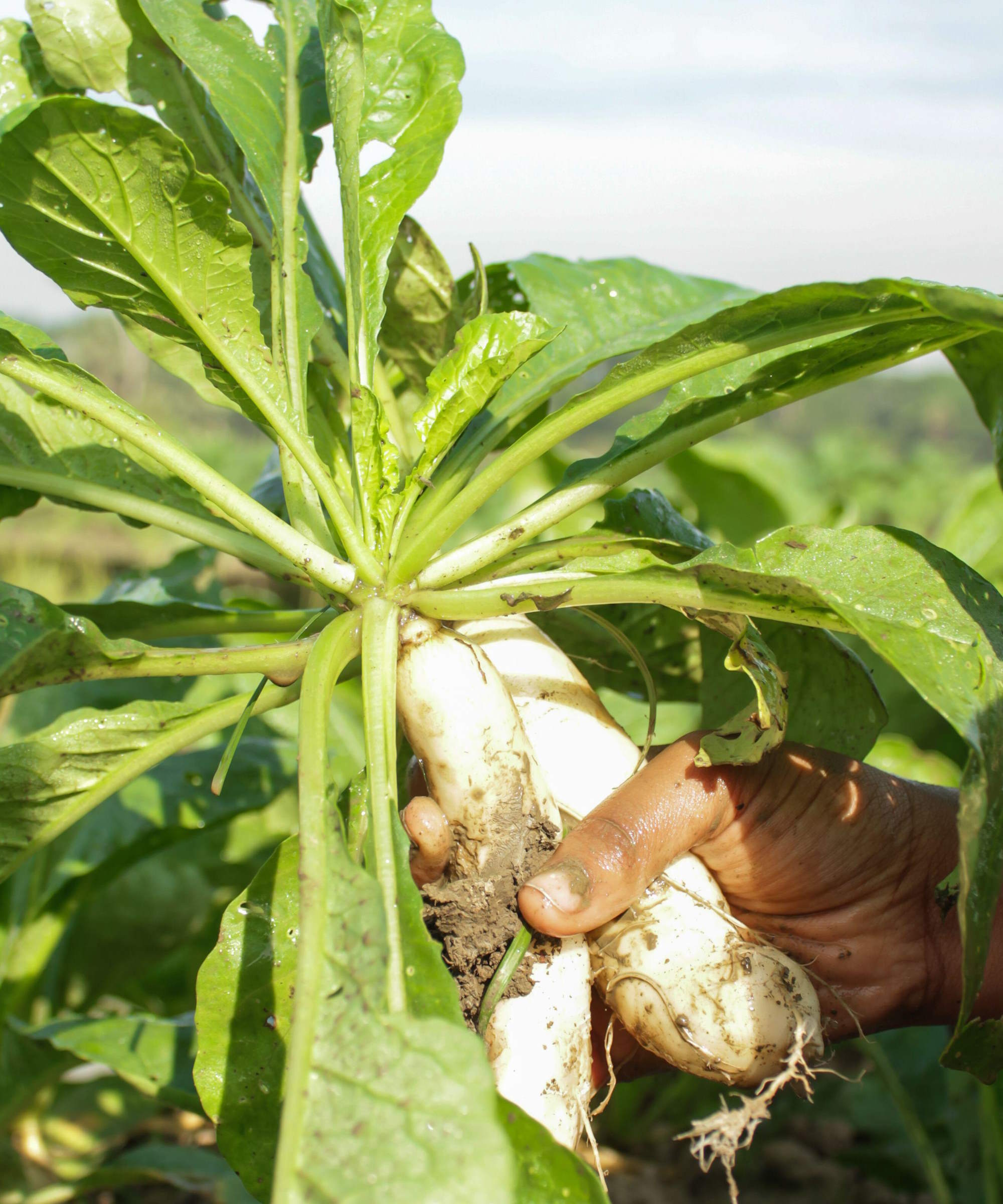
A guide to harvesting daikon radish
Daikon radishes are also known as mooli, white radish, winter radish, or icicle radish. The crop usually produces a long white taproot, though there are red varieties to grow too. Discover how to know it is daikon radish harvest time and the best recommendations for lifting and preparing the roots.
When to harvest daikon radish
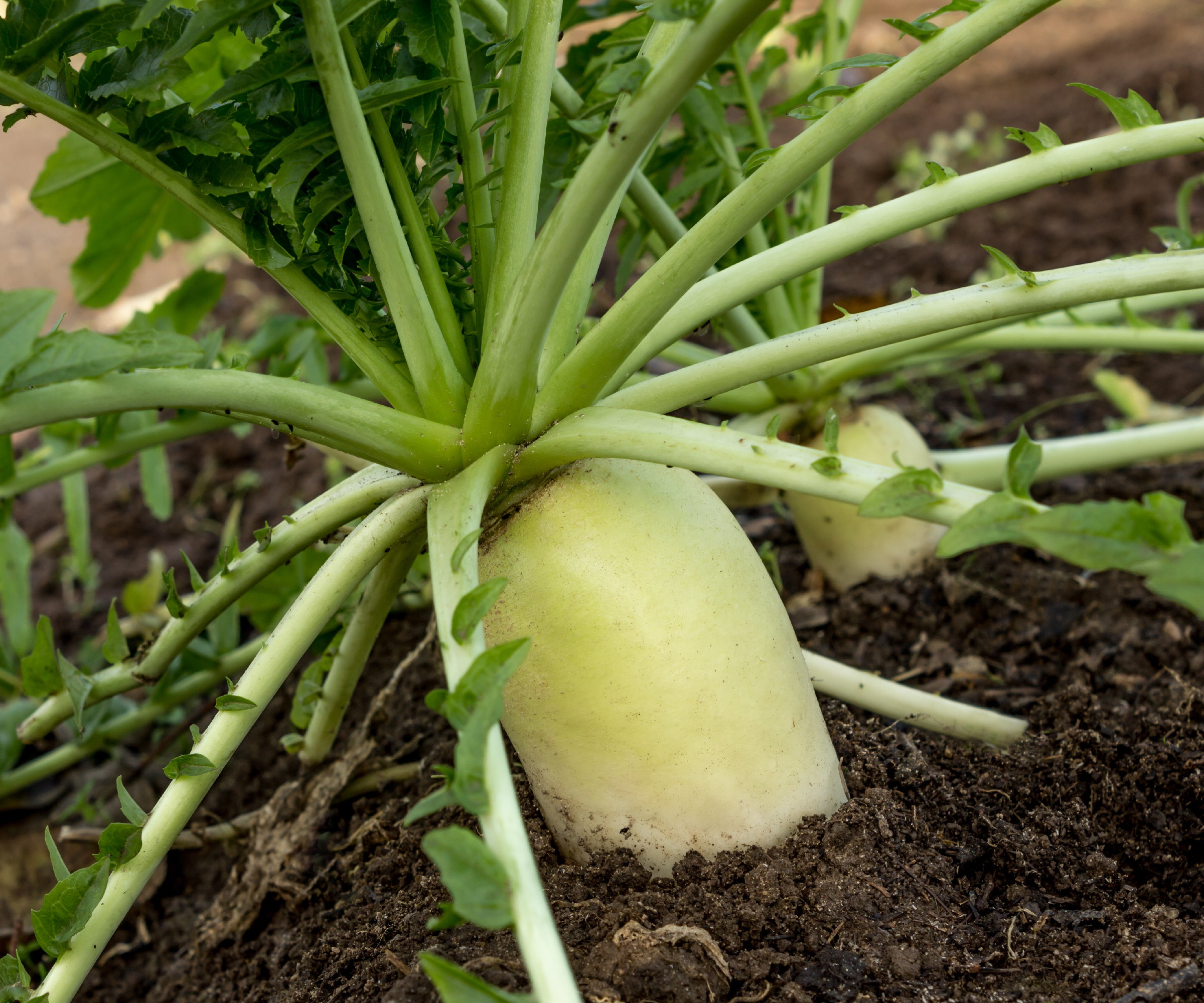
Daikon radishes are best suited to being sown outdoors from seed in late summer or early fall. Sowing earlier in the year into the vegetable garden would not produce a great crop as these cool-weather vegetables prefer the lower fall temperatures, rather than the summer heat.
Daikon radishes can be ready to harvest around 60-70 days after planting the vegetable, though the exact time will depend on the variety and growing conditions. Always refer to the seed packet for information on the days to maturity for any specific variety of daikon.
Keep track of the size of the daikon radish foliage, as this can indicate when it is time to harvest the crop. Once the leaves reach at least eight inches long the roots have developed enough to start harvesting.
Daikon radishes can be lifted and used once they reach a usable size. Carefully pull one root from the ground to gauge its size and determine if the crops are large enough for your needs.
‘Daikon radish is best harvested when the roots begin to show 1-2 inches above the soil but before the arrival of the first fall frost,’ recommends Ashleigh Smith, managing editor at True Leaf Market.
It is important to harvest daikon radishes before they get too large. Leaving the roots in the ground for too long would be a harvesting mistake as the crop can get woody and bitter, or the vegetable can succumb to foul weather.
The crop needs to be harvested before the frosts arrive, otherwise, they risk going soft in sub-zero temperatures and rotting in the soil. While you can use garden cloches or horticultural fleece to protect vegetables from frost, the quality of the daikon radishes will deteriorate after a frost.
How to harvest daikon radish
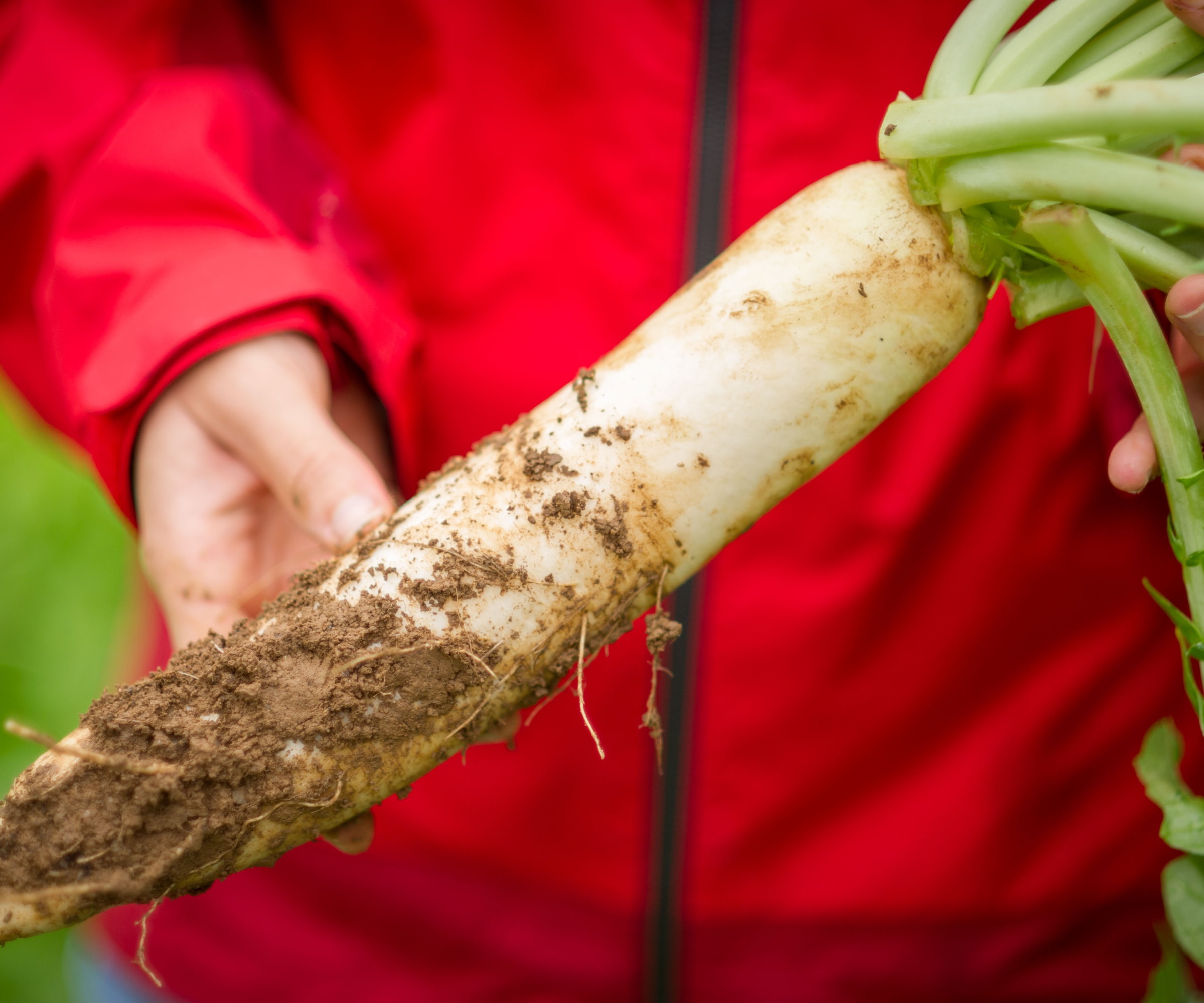
Be careful when harvesting daikon radish to avoid damaging the edible roots. It is possible to harvest daikon radish by hand, but some longer-rooted varieties may need the assistance of garden tools to get them out of the ground successfully without harm.
To harvest radishes, gently grab the crop by the base of the leaves and lever the roots out of the ground. Take care not to tug too hard and use a fork or spade to assist with loosening the soil around longer-rooted varieties. Using too much force risks snapping the root.
Remove the leaves from the roots before storing the crop. The leaves are edible and have a peppery flavor, or can be used to make compost if you don’t plan on eating them. The daikon radish roots will store for longer without the leaves. Refrain from washing the roots until you plan to use them.
Daikon radishes can be stored in a breathable bag or wrapped in a damp towel in a refrigerator for up to a week. To preserve the crop for longer, cut and blanch the roots before freezing them or ferment the radishes.
How to harvest daikon radish seeds
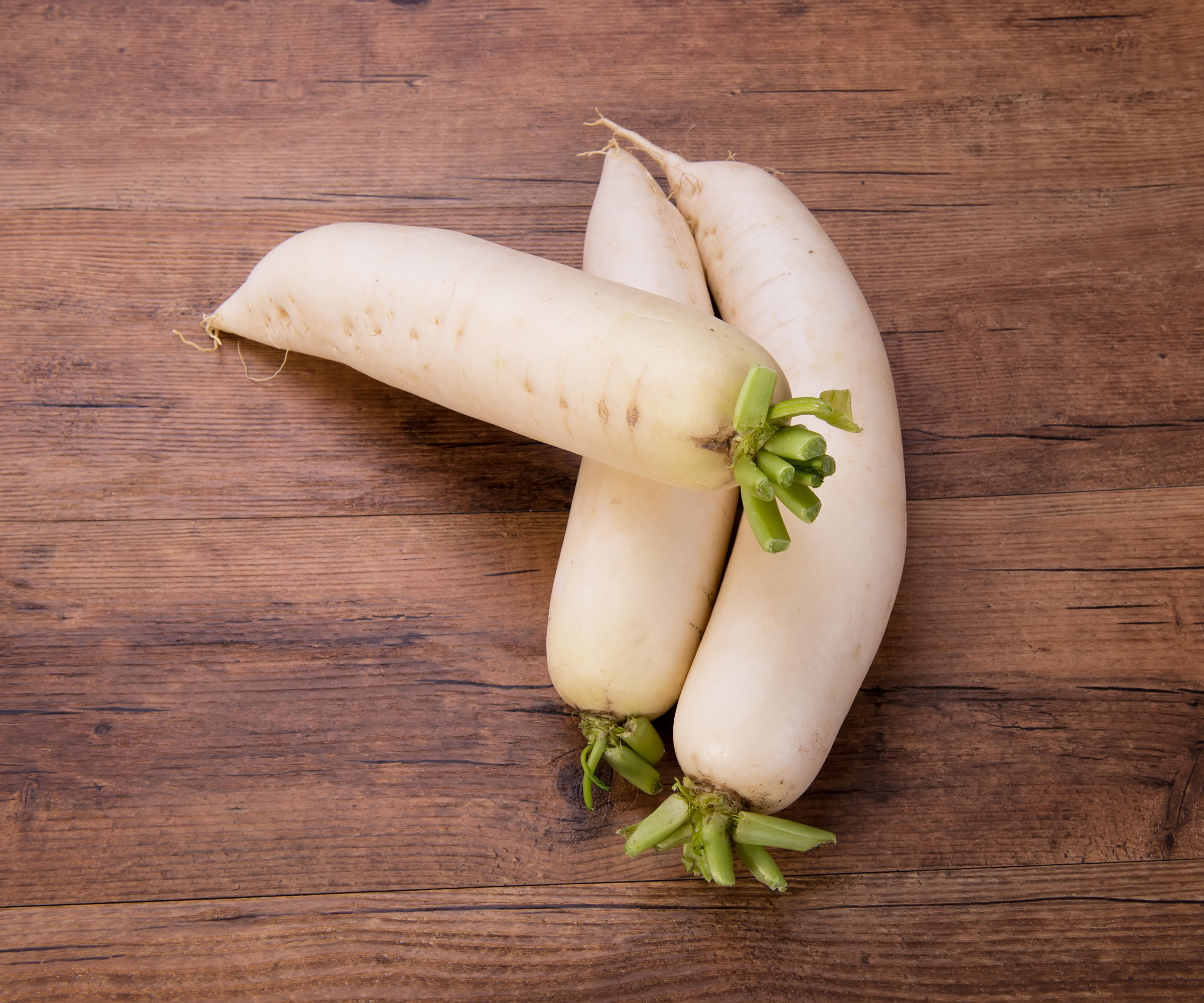
Daikon radishes can be protected in fall in an attempt to overwinter them and collect the seeds next year. Using frost cloth or cloches to stop the soil from freezing can prevent the roots from rotting during the colder months. As daikon radishes are biennial plants, they will start to flower and go to seed in the second year.
The crop will begin to grow again once the temperatures rise in spring. It will first develop a flower stalk, followed by the production of green seed pods. These seed pods should be left to dry and turn brown on the plant. At this stage, you can collect the seed heads and separate the seeds from the chaff to sow again. The seeds can be stored for up to five years.
Rather than overwintering daikon, you can alternatively try sowing the crop in spring. You may get a harvest of roots around 7-8 weeks after sowing, depending on your climate. When the temperatures rise in summer, the plants will bolt and start to flower and produce seed. Let the pods dry on the plant to collect the seed.
If you intend to collect seeds, it is recommended to grow heirloom varieties, as seeds saved from hybrid types may not produce the same type of radishes.
A heavy-duty four-tine garden fork that is ideal for a wide range of tasks, including digging and also lifting vegetables from the soil. The fork is strong, durable, and made from high-quality stainless steel for a long lifespan.
FAQs
How big do daikon radishes get?
Daikon radishes can usually reach up to one foot in length and six pounds. The size will depend on the variety, and the Sakurajima daikon is a special cultivar that can grow to mammoth sizes. The Guinness World Record for the largest daikon radish is a Sakurajima daikon weighing 31.1 kg.
Radishes are usually grown in the soil or raised beds, though you can grow radishes in pots if you cultivate edibles in a vegetable container garden. Any pot or grow bag must be at least 12 inches deep to grow daikon radishes, but you can enjoy success with summer radishes in shallower pots and troughs.







